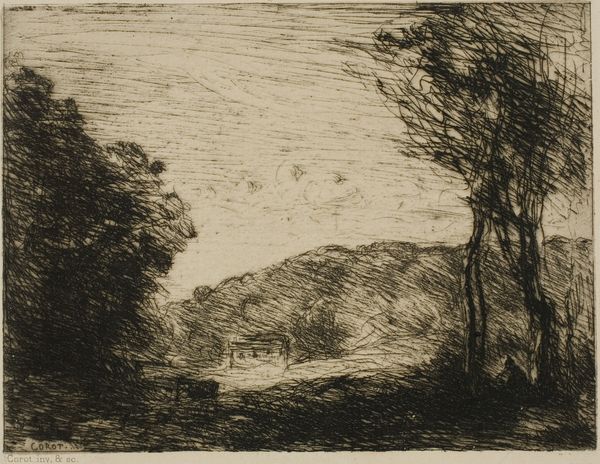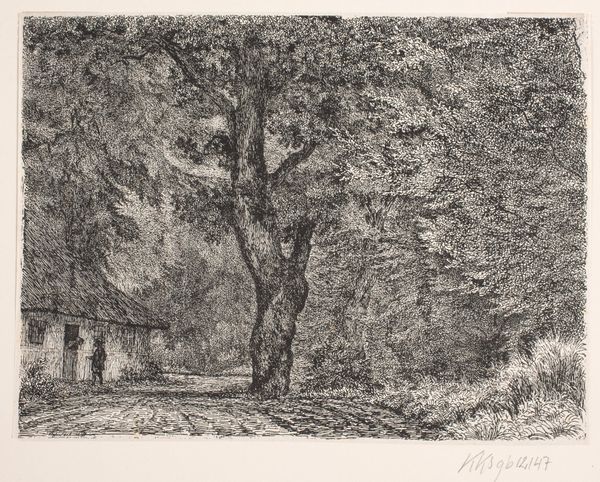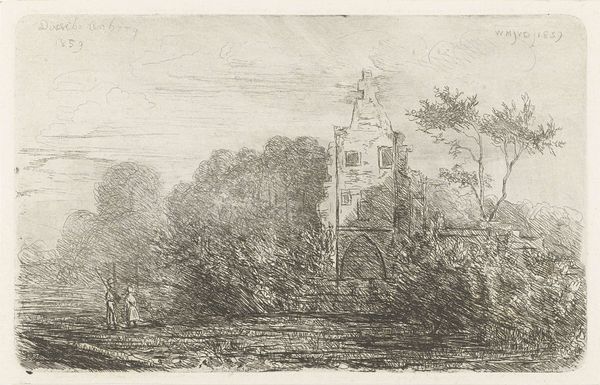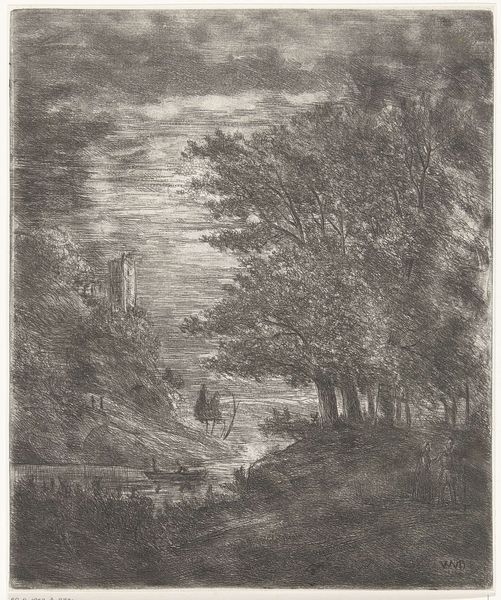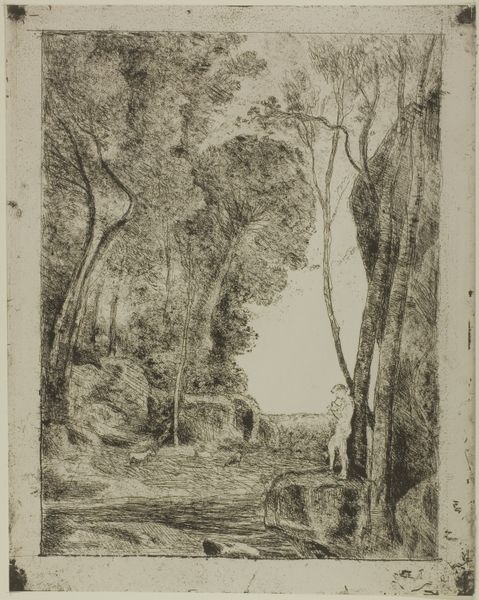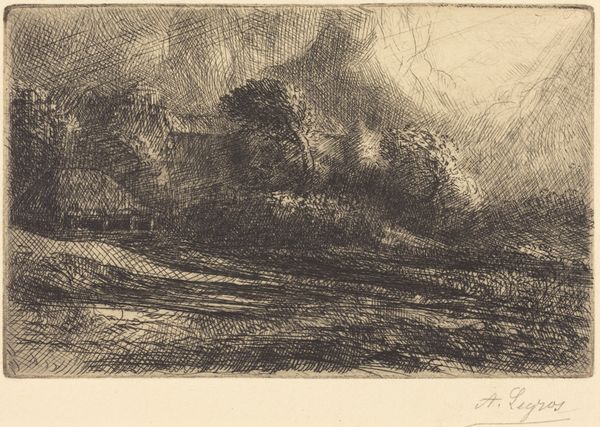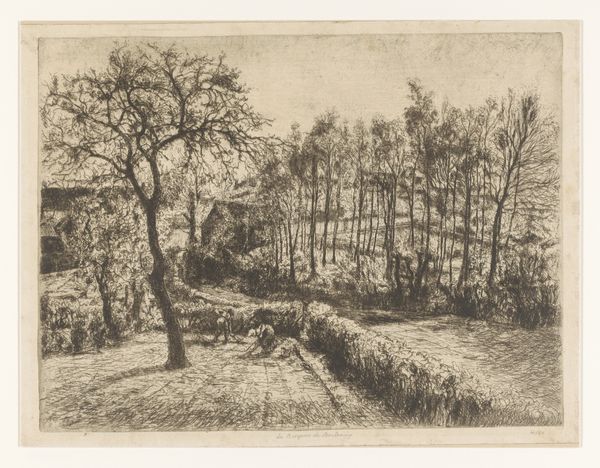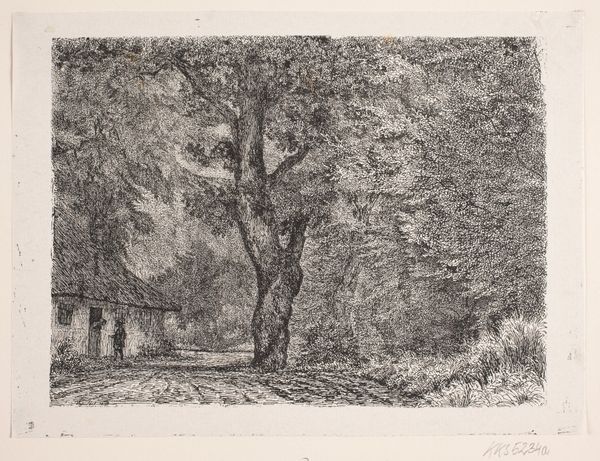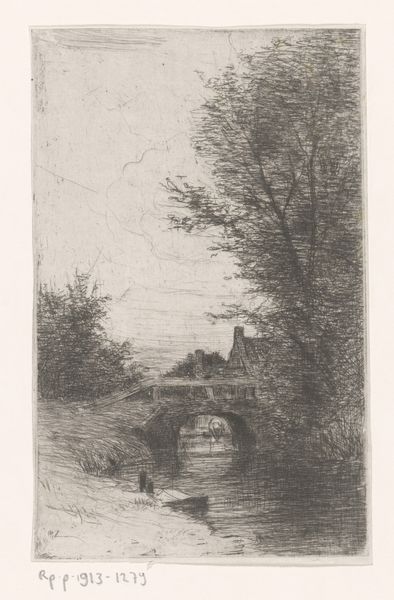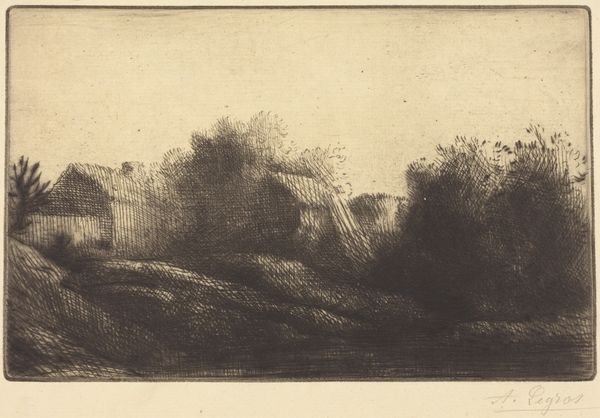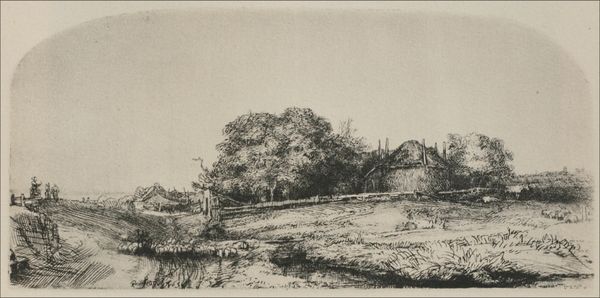
drawing, lithograph, print, etching, paper
#
drawing
#
lithograph
# print
#
etching
#
landscape
#
paper
Dimensions: 181 × 261 mm (image); 184 × 263 mm (sheet)
Copyright: Public Domain
Curator: This landscape practically whispers tales of another time. It's as if the stones of the abbey themselves remember the prayers and the lives lived within those walls. Editor: It's arresting, isn't it? Somber, almost brooding. The heavy, dark foliage seems to press in on the ruined abbey, a kind of visual weight on the past. Curator: It's Joseph Pennell's "Egglestone Abbey, from the River," created around 1899. Pennell was an American expatriate, deeply influenced by Whistler and known for his etchings, drawings, and lithographs, capturing scenes from around the world. You can find this print at the Art Institute of Chicago. Editor: An etching. That explains the dense cross-hatching, giving it that almost oppressive feel. The composition leads your eye straight to the abbey, a lone structure bravely holding its ground. What does the abbey represent to Pennell, do you think? Curator: The ruins act as a potent symbol, signifying not just religious faith but the passage of time, the inevitable decay that befalls even the most steadfast institutions. The abbey's silhouette suggests resilience, though, standing defiantly amidst nature’s reclamation. Editor: You are right about that feeling of resilience; it’s quite the dynamic. Consider how the social climate during Pennell's time informed his aesthetic choices. Late Victorian England grappled with immense industrial growth alongside nostalgia for a rural past. How did this artwork reflect or critique society? Curator: Pennell’s technical virtuosity shines through in capturing both the architectural detail and the atmosphere of melancholy, but yes, there is tension. It served, for some viewers, to validate cultural heritage at a moment of social upheaval and intense urbanism. Editor: A stark reminder that history is always present, influencing how we view and value these lasting structures. It asks, who controls the narrative? Whose stories are prioritized when history's pages turn? Curator: It seems that Pennell, and we viewers too, can connect the abbey's story with larger tales of perseverance and shifting cultural values by using this location and artwork as a sign. Editor: Beautifully put! Thanks to that contrast—the heavy textures next to the skeletal building—we can connect viscerally.
Comments
No comments
Be the first to comment and join the conversation on the ultimate creative platform.
